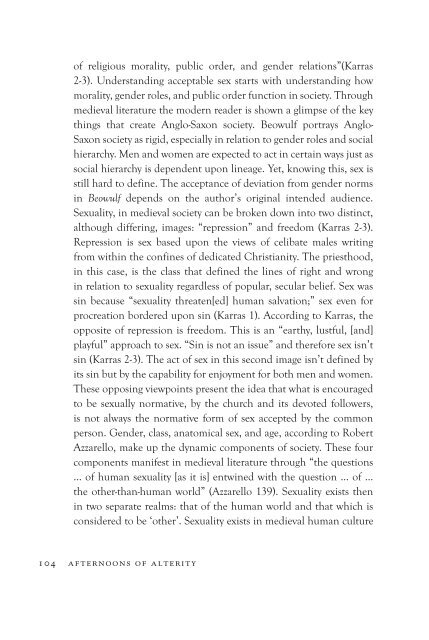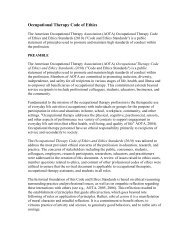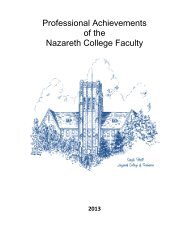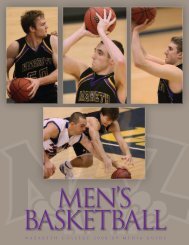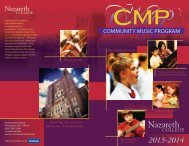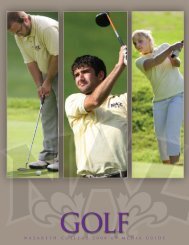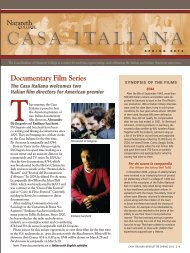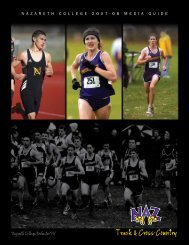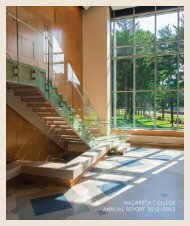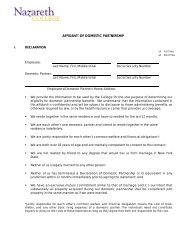Afternoon of Alterity - Nazareth College
Afternoon of Alterity - Nazareth College
Afternoon of Alterity - Nazareth College
Create successful ePaper yourself
Turn your PDF publications into a flip-book with our unique Google optimized e-Paper software.
<strong>of</strong> religious morality, public order, and gender relations”(Karras2-3). Understanding acceptable sex starts with understanding howmorality, gender roles, and public order function in society. Throughmedieval literature the modern reader is shown a glimpse <strong>of</strong> the keythings that create Anglo-Saxon society. Beowulf portrays Anglo-Saxon society as rigid, especially in relation to gender roles and socialhierarchy. Men and women are expected to act in certain ways just associal hierarchy is dependent upon lineage. Yet, knowing this, sex isstill hard to define. The acceptance <strong>of</strong> deviation from gender normsin Beowulf depends on the author’s original intended audience.Sexuality, in medieval society can be broken down into two distinct,although differing, images: “repression” and freedom (Karras 2-3).Repression is sex based upon the views <strong>of</strong> celibate males writingfrom within the confines <strong>of</strong> dedicated Christianity. The priesthood,in this case, is the class that defined the lines <strong>of</strong> right and wrongin relation to sexuality regardless <strong>of</strong> popular, secular belief. Sex wassin because “sexuality threaten[ed] human salvation;” sex even forprocreation bordered upon sin (Karras 1). According to Karras, theopposite <strong>of</strong> repression is freedom. This is an “earthy, lustful, [and]playful” approach to sex. “Sin is not an issue” and therefore sex isn’tsin (Karras 2-3). The act <strong>of</strong> sex in this second image isn’t defined byits sin but by the capability for enjoyment for both men and women.These opposing viewpoints present the idea that what is encouragedto be sexually normative, by the church and its devoted followers,is not always the normative form <strong>of</strong> sex accepted by the commonperson. Gender, class, anatomical sex, and age, according to RobertAzzarello, make up the dynamic components <strong>of</strong> society. These fourcomponents manifest in medieval literature through “the questions… <strong>of</strong> human sexuality [as it is] entwined with the question … <strong>of</strong> …the other-than-human world” (Azzarello 139). Sexuality exists thenin two separate realms: that <strong>of</strong> the human world and that which isconsidered to be ‘other’. Sexuality exists in medieval human culture104 afternoons <strong>of</strong> alterity


